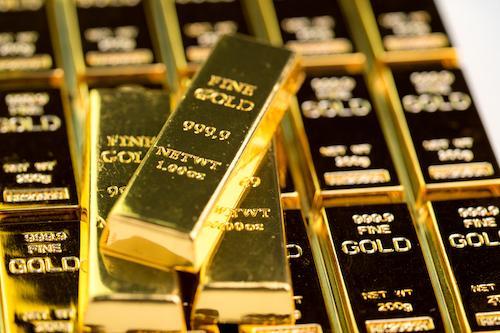
China and India Holding the Flag for Gold
For the gold investor, sometimes it seems that supply/demand fundamentals can be somewhat irrelevant to the actual course of the gold price itself. To an extent, this may be true as the price often moves strongly on data releases deemed to be positive or negative, geopolitical or geo-economic events, or even on the words of politicians or respected commentators – but this is only on the margins of price movements.
Supply and demand fundamentals still serve to underpin basic price levels. If these get too out of sync, the price will benefit, or suffer, in the longer term while the day to day price movements related to data releases, politics and overall economics are, to use a phrase much in use recently regarding inflation, transitory, and may have little long term effect on the overall path of the yellow metal. Consequently, significant movements in factors affecting gold supply and demand – in other words, gold fundamentals - are key to long-term price patterns.
That is why elements of the supply/demand equation that can make differences of hundreds of tons (metric tons) of gold available to the market are so important.
There does seem to be a primary continual supply and demand balance amounting to somewhere in the region of 4,000 –4,500 tonnes a year at present made up of new mined supply and scrap conversion. The latter tends to vary on gold price strength or weakness. Still, the former remains reasonably consistent at around 3,500 tonnes a year and only varying by around 2% annually, if that, at present.
The variables, which can have such a key influence on overall supply/demand patterns are elements such as central bank purchases and sales and ETF inflows and outflows, which is why these factors tend to be so predominant in ongoing gold analyses. But another key element is consumer demand and a fall-off in this from such key populations as those of China and India – both of which had been severely affected by the coronavirus pandemic – may well have been responsible, at least in part, for gold’s relatively lackluster price performance over the past couple of years.
Over the past decade or so, China and India have been by far the world’s biggest consumers of gold, but both countries saw gold demand dip sharply – particularly over the past two years, and it is probably no coincidence that gold seriously underperformed expectations over the same period. Thus it should be particularly encouraging that gold demand in both key gold consuming nations has been picking up sharply in recent months.
China’s gold demand, for example, according to the Shanghai Gold Exchange’s reported gold withdrawals in 2021 was around 45% higher than in the prior coronavirus-affected year. Indian gold imports (the country produces only a tiny amount of gold domestically) have come in at over 1,000 tonnes for the first time in over a decade. These two nations alone consume an amount of gold equivalent to around 80% of global new mined gold. And they are not the only countries that are seeing increasing gold demand.
Over the past several years, the world’s central banks have also been adding to their gold reserves – and there is a strong belief that some nations – notably China and Russia – are hugely under-reporting their gold reserve totals to the IMF and if this is true, that makes the regularly-released country-by-country gold reserve figures (see below for the world’s top 10 national gold reserve holders according to the IMF figures up to end-November) something of a fiction.
Table: Top 10 National Official Gold Holdings as Reported to IMF
|
Country |
Tonnes |
% of forex reserves |
|
USA |
8,133.5 |
66.4% |
|
Germany |
3,359.1 |
66.0% |
|
Italy |
2,451.8 |
62.9% |
|
France |
2,436.4 |
57.8% |
|
Russian Federation |
2,298.5 |
21.4% |
|
China, P.R.(inc. Hong Kong) |
1,950.4 |
3.3% |
|
Switzerland |
1,040.0 |
5.5% |
|
Japan |
846.0 |
3.5% |
|
India |
750.4 |
6.8% |
|
Netherlands |
612.5 |
55.4% |
Source: IMF, World Gold Council, US Gold Bureau
The countries which may be under-reporting their gold reserve figures hide these gold holdings in separate accounts which they deem as non-reportable, but they could amount to hundreds, if not thousands, of tonnes in total. Maybe we are being over cynical about the reporting transparency of some nations. Still, China, in particular, does have a track record of being somewhat less than fully transparent about its gold holdings, and it would be hardly surprising if other countries, too, were deliberately obtuse in declaring the amounts of gold held. North Korea, as another case in point, Is believed to hold gold in its reserves but reports zero holdings to the IMF.
So why should some countries be building up their gold reserves? There is almost a consensus that there will be a significant reset of the global economic structure within the next few years, resulting from the huge debt build-ups by many countries to try and mitigate the economic effects of the virus pandemic. There is a strong feeling that gold will play an important part in any reset process with the countries holding the most being in a prime position when it comes to resetting national economic priorities, and in perhaps re-organizing what is the world’s primary reserve currency, with the economic advantages that can bring.
Currently, the US dollar is the world’s primary reserve currency, which has given the US some key advantages in the global economy, which some have described as ‘dollar hegemony.’ It has led to much world trade only being undertaken in US dollars, although this has been somewhat eroded in recent years - particularly with Russia trying to disassociate itself as much as possible from the dollar, in part as a protection against US economic sanctions.
There is an assumption therefore that China, with its yuan (renminbi), might like to replace the dollar with its own currency as the global reserve unit.
Although the latter may well replace the US as the world’s dominant economy in the years ahead, making this perhaps an inevitable outcome, but one that may well take a considerable amount of time to come about. There will likely thus be a period where both currencies will become major constituents of foreign currency reserves. However, we would expect the yuan to dominate in the ultra long term.
For the moment, though, the apparent strength of Chinese and Indian consumer demand should help keep gold’s supply/demand fundamentals reasonably strong.
Continuing demand from other central banks, jockeying for position when the global economic reset comes, if it does, will also be positive for gold. The only real negative, for the time being, seems to be a continued outflow from the gold ETFs, but this could turn around rapidly – particularly if the gold price puts on a few dollars which, in the light of continuing high inflation and low interest rates, certainly seems to be a distinct possibility. Hold the faith in gold as a wealth protector. It has served as such since time immemorial and will probably continue to do so for the foreseeable future.






